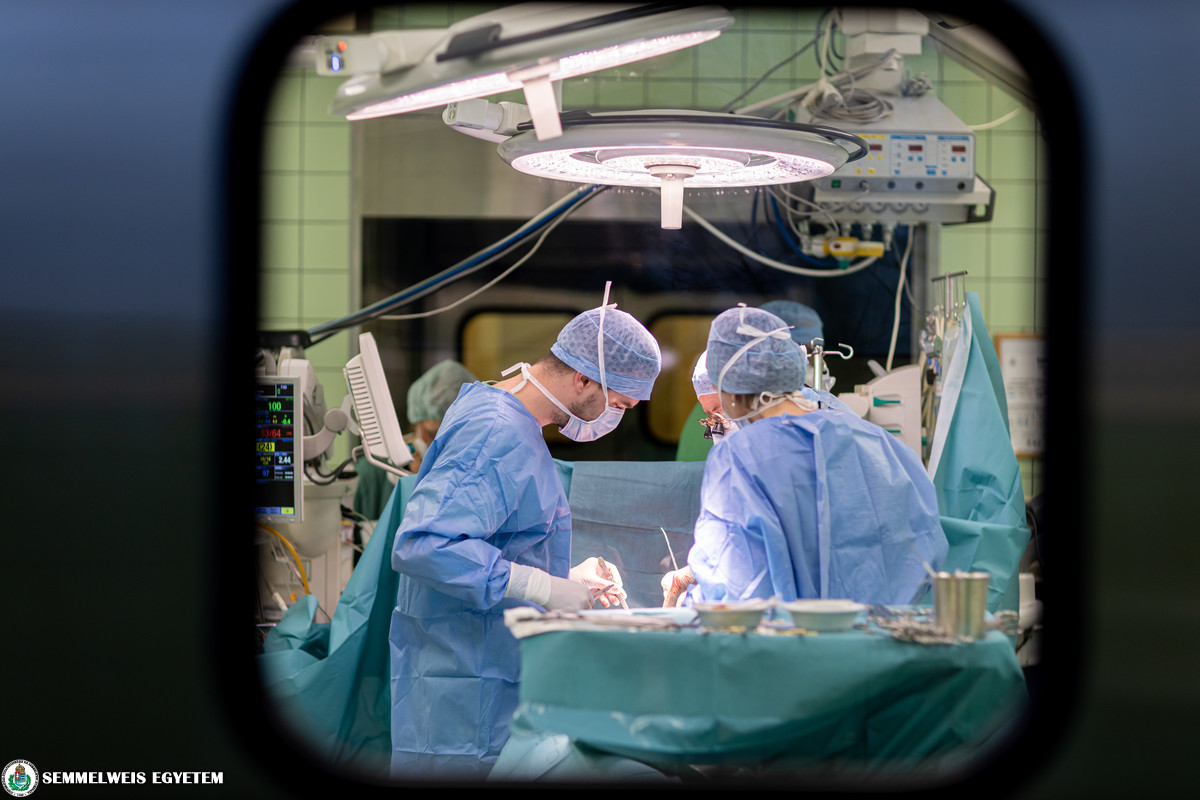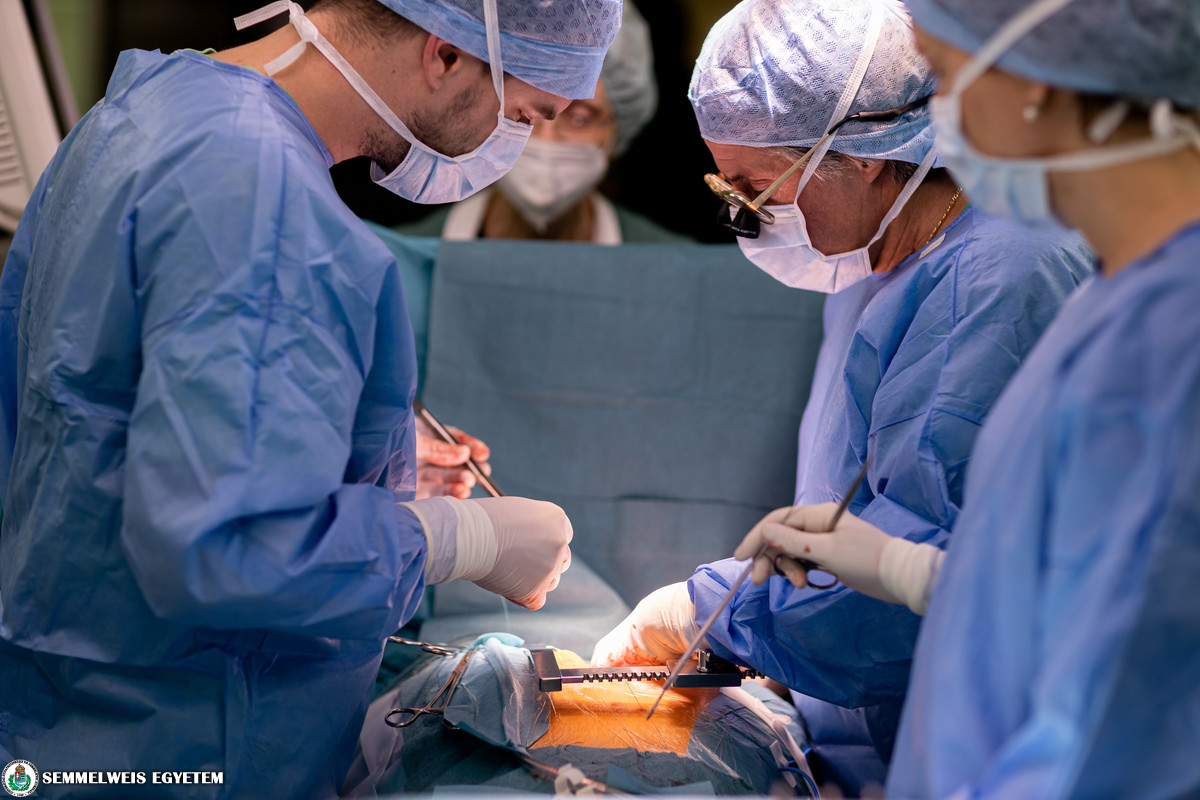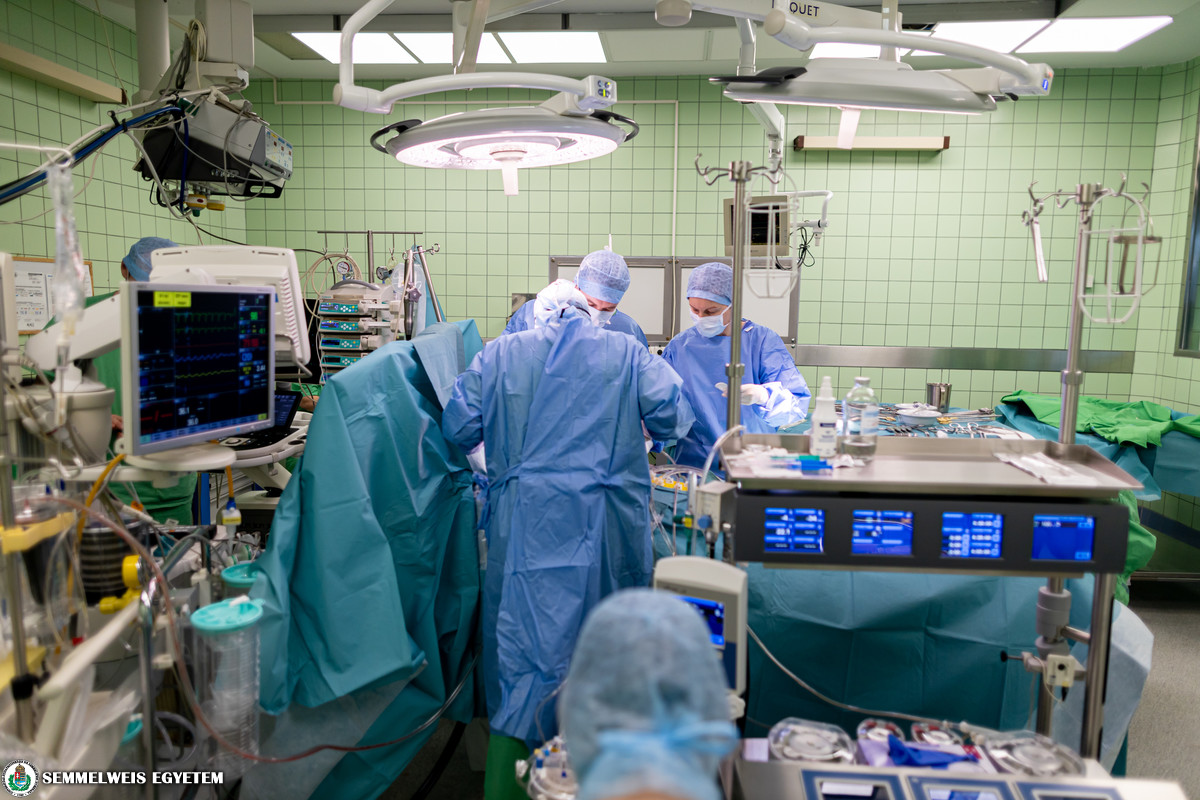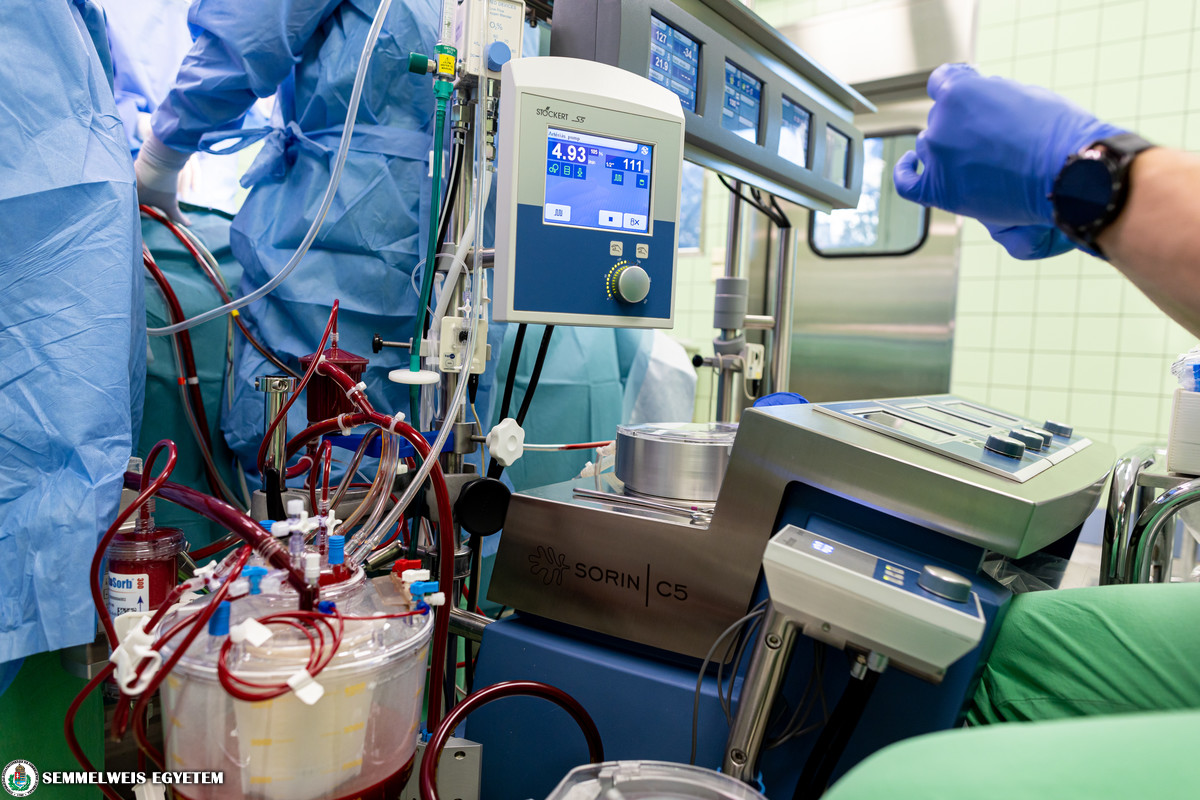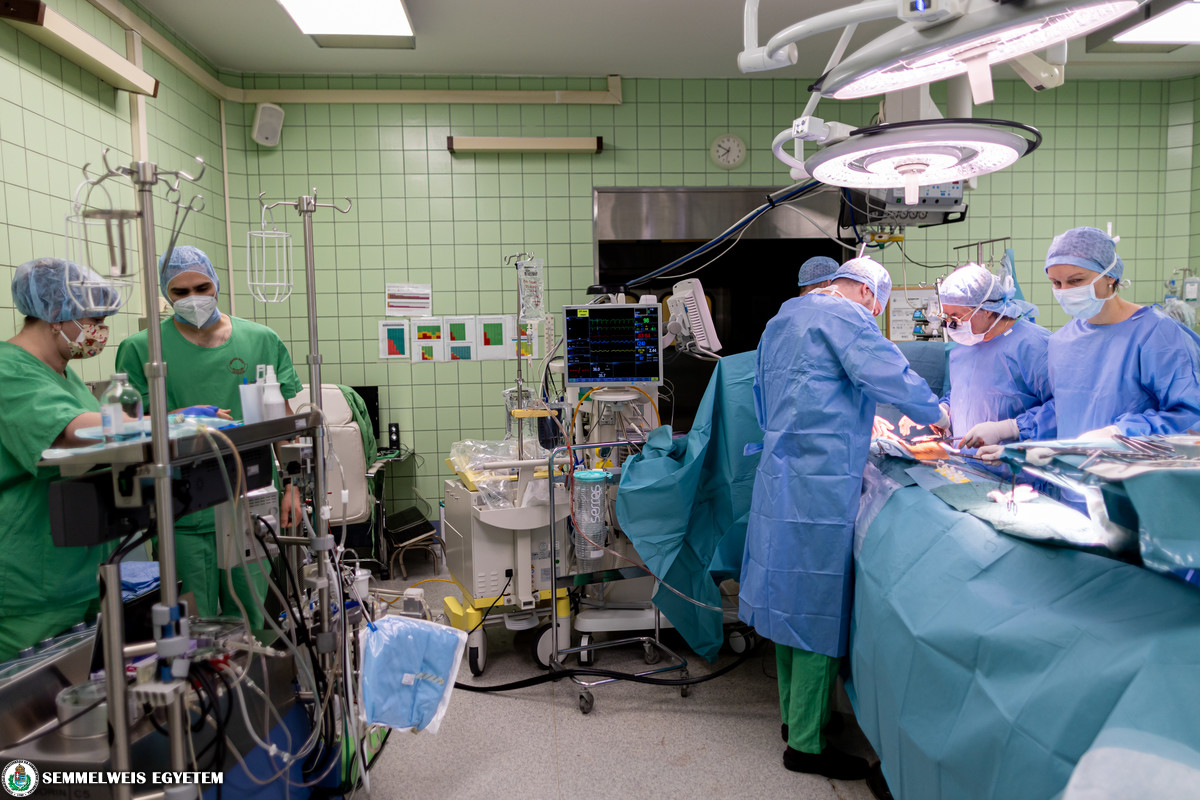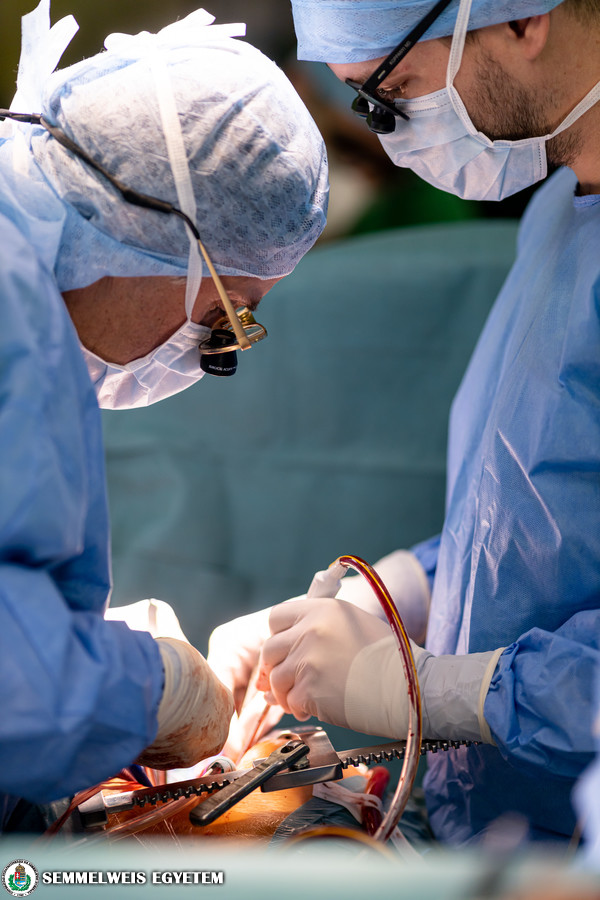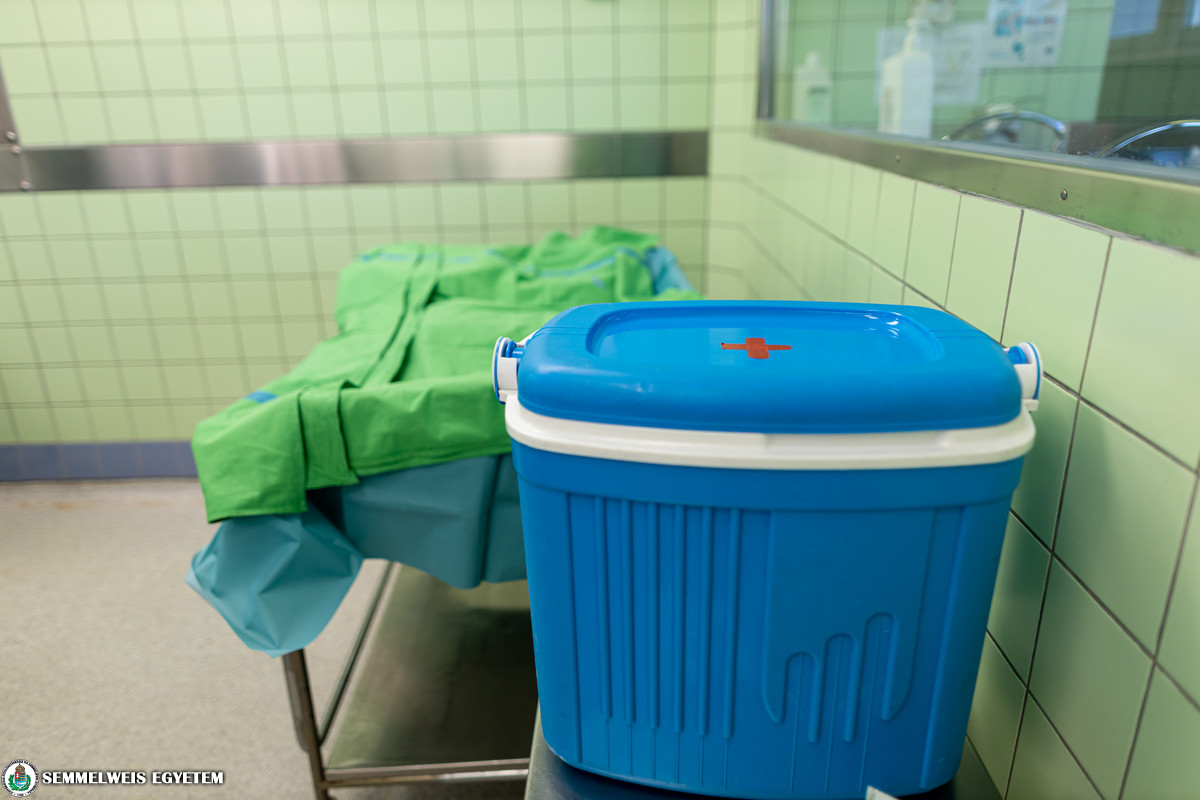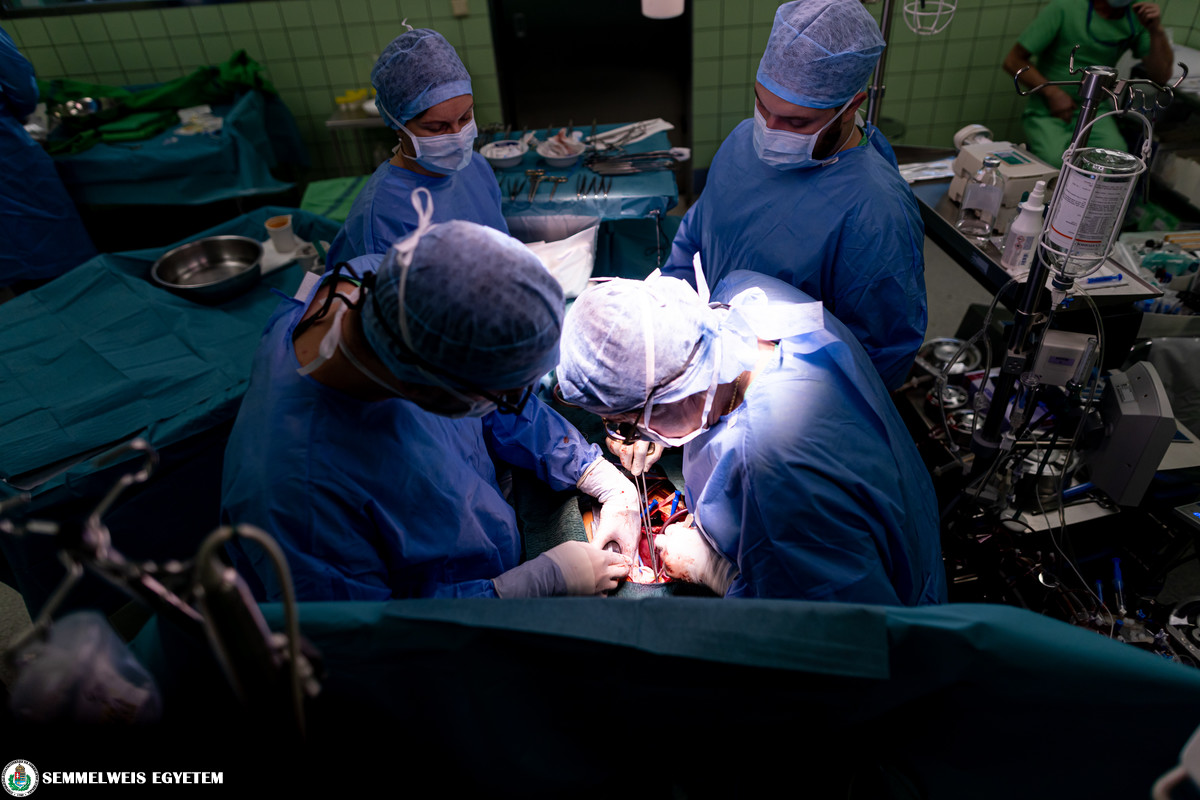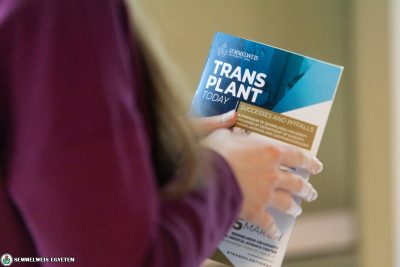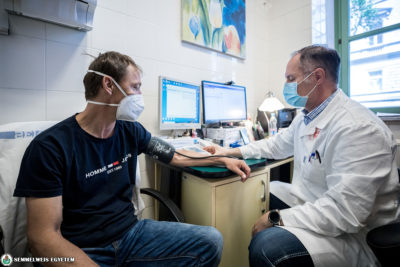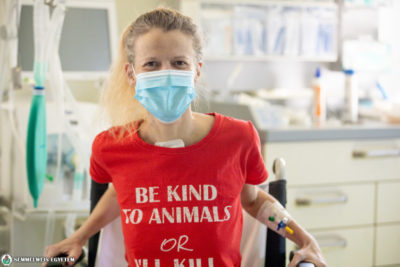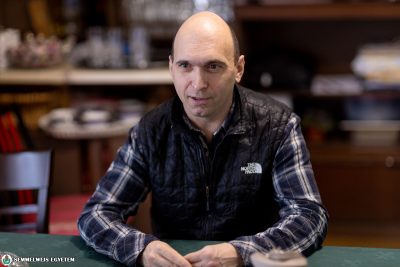 Krisztián Hoffer celebrated his “second birthday”, the 24th anniversary of his heart transplant, at the end of November. Every year, he has cake on the table like on a normal birthday, and if he can, he lights a candle with his parents and sibling at the headstone commemorating anonymous donors in the Fiumei Road cemetery.
Krisztián Hoffer celebrated his “second birthday”, the 24th anniversary of his heart transplant, at the end of November. Every year, he has cake on the table like on a normal birthday, and if he can, he lights a candle with his parents and sibling at the headstone commemorating anonymous donors in the Fiumei Road cemetery.
The life-changing heart transplantation was performed on November 29, 1997 by Dr. Elek Bodor at the Városmajor Heart and Vascular Center for the then 18-year-old Krisztián. The young man had been in a hospital bed at the National Institute of Cardiology for a year and a half before the operation, almost unable to move – he was in such a bad condition that he had lost 38 kilos during this time and had to be revived several times.
After the transplant, seeing the condition of my old, removed heart, my doctor told my parents that it was a miracle I was still alive to live through the transplant, because it was medically impossible to live with a heart like that
– recalls the now 44 year-old man. The fact that it did happen was perhaps due to his “famous” willfulness within the family. It is what drove him forward even as a child, when his congenital heart disease meant that he was always a little more tired than others, but he still went hiking, played football and went to the gym every day, and that helped him after the transplant. He says that his quality of life improved significantly after the transplant, but it took him a long time to regain his physical fitness and it was not easy for him to build his adult life as a heart transplant recipient.
Seniority with a 24-year-old new heart
 With his 24-year-old new heart, Krisztián Hoffer enjoys seniority in the social media group where he keeps in touch with other heart transplant recipients. It’s also a responsibility, he says, because it’s important for him to be able to show an example and hope to his fellow heart transplant patients and those waiting for a transplant. To remain in good health, psychologically and physically, 24 years after the transplant, sport is very important. That’s why last year, on his initiative, he and a small team cycled around several lakes in Hungary, including Lake Velence, Lake Tisza and a small tour of Lake Balaton, he recalls, showing the refrigerator magnets collected on the various trips. This year’s plans include a multi-day trip around Lake Fertő and a complete Lake Balaton tour, for which he hopes to bring even more people who are in a similar situation.
With his 24-year-old new heart, Krisztián Hoffer enjoys seniority in the social media group where he keeps in touch with other heart transplant recipients. It’s also a responsibility, he says, because it’s important for him to be able to show an example and hope to his fellow heart transplant patients and those waiting for a transplant. To remain in good health, psychologically and physically, 24 years after the transplant, sport is very important. That’s why last year, on his initiative, he and a small team cycled around several lakes in Hungary, including Lake Velence, Lake Tisza and a small tour of Lake Balaton, he recalls, showing the refrigerator magnets collected on the various trips. This year’s plans include a multi-day trip around Lake Fertő and a complete Lake Balaton tour, for which he hopes to bring even more people who are in a similar situation.
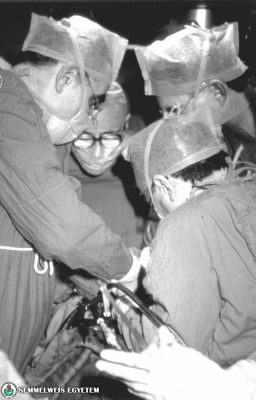
Krisztián Hoffer is the oldest heart transplant recipient, whose follow-up care is also provided at the Városmajor Heart and Vascular Center of Semmelweis University. The first heart transplant in Hungary took place here 30 years ago, on January 3, 1992, after years of concentrated preparation efforts. After study trips abroad, they doctors first practiced on dead people, removing and reattaching hearts, and later operated on dogs using heart motors. “We trained 25 to 30 nurses and assistants to attend to each transplant patient minute by minute, hour by hour. We also had to put together a book of a few hundred pages, in which we recorded the protocol of the transplantation,” recalled Dr. Zoltán Szabó, the heart surgeon professor who performed the first heart transplant in Hungary and who died in 2015, in an earlier article.
The first Hungarian patient to receive a heart transplant was Sándor Schwartz, who lived 28 years with his new heart, passing away in November 2019 at the age of 56.
“The day after the surgery, on a Saturday morning, we were able to pull the tube out and turn off the ventilator. Afterwards I took Sándor a glass of orange juice and thought it would be a relaxing week. We had agreed not to disclose the operation for a week, and we didn’t want to make a hasty announcement until the patient was completely well. In reality, things turned out a little differently. On Monday morning at 6:30 a.m. the phone rang, László Surján, the then Minister of Health, asked about the case, and then the press came, and that same morning there were journalists who tried to get information by climbing over the clinic’s fence,” recalled Dr. Zoltán Szabó in our earlier article.
A surgical feat 30 years ago
In the 30 years since, 643 heart transplants have been performed at the Városmajor Heart and Vascular Center. In 2007, heart transplantation for children was also launched in Hungary at the Gottsegen György National Institute of Cardiology (now known as the Gottsegen György National Cardiovascular Institute), where 72 people have received a new heart in the period since, bringing the total number of transplants in Hungary to over 700.
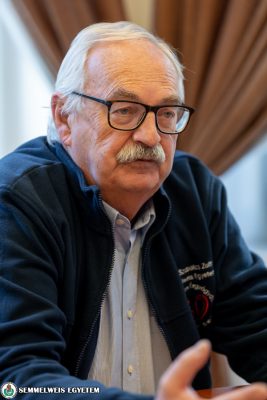 “30 years ago, the first heart transplant was a surgical feat and it took a huge and pioneering organizational effort to make it happen. It also took courage on the part of the surgeon to want to perform the first such operation in Hungary, and courage on the part of the patient to be the first in Hungary to undergo a heart transplant,” points out Dr. Zoltán Szabolcs, Professor at the Heart and Vascular Center. As he recalled, Dr. Elek Bodor took over the baton from Dr. Zoltán Szabó after his retirement in 1993, and it is to his credit that a complex program around heart transplantation has been established. Dr. Zoltán Szabolcs then headed the heart transplant program from 2003, and has himself performed more than 120 heart transplants.
“30 years ago, the first heart transplant was a surgical feat and it took a huge and pioneering organizational effort to make it happen. It also took courage on the part of the surgeon to want to perform the first such operation in Hungary, and courage on the part of the patient to be the first in Hungary to undergo a heart transplant,” points out Dr. Zoltán Szabolcs, Professor at the Heart and Vascular Center. As he recalled, Dr. Elek Bodor took over the baton from Dr. Zoltán Szabó after his retirement in 1993, and it is to his credit that a complex program around heart transplantation has been established. Dr. Zoltán Szabolcs then headed the heart transplant program from 2003, and has himself performed more than 120 heart transplants.
In his view, there has been no significant change in surgical technique in the last 30 years. Nor has the time taken to perform the core part of the operation become much shorter: the first transplant took 2.5 hours, which has now been reduced to about 2 hours as experience has been acquired. The biggest changes for the program and patients have been the development of a national waiting list and donor coordination, the development of immunosuppressive therapy to prevent organ rejection and the recognition of the importance of aftercare. Today in Hungary, there are about 60 patients on the waiting list every day of the year who suffer from end-stage heart failure such that transplantation is the only option.
Dr. Zoltán Szabolcs stressed that the heart transplant program is a team effort, requiring the coordinated work of up to 100-120 people, from the cleaner, the donor carer, the heart-lung motor operator, the cardiac surgeon and the many other professionals involved in the transplant program.
Transplantation consists of five stages, which must interlock to ensure that both the program and individual transplants are successful. The first step is donor management, where a brain-dead donor is treated like any other patient in intensive care, in order to save the lives of others with his or her organs. The next step is the selection of the recipient, the patient who will receive the organ, and then the removal and insertion of the donor organ. The operation is followed by a high level of intensive post-operative care, which in severe cases can last for weeks or months, and aftercare lasts for the rest of the patient’s life.
The Városmajor as a leading heart transplant center in Europe
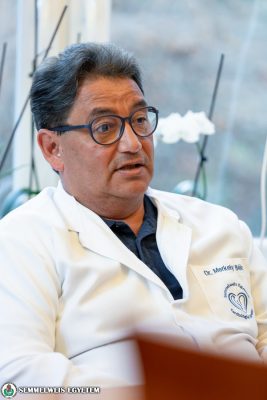 “Over the past 30 years, we have come a long way to become one of Europe’s leading heart transplant centers at the Városmajor Heart and Vascular Center. Each step has had its key moment, but the first one, taken by Dr. Zoltán Szabó, was of particular importance. Without his pioneering work, we would not have the results we can be proud of today,” emphasized Dr. Béla Merkely, the director of the center and the rector of Semmelweis University. As he recalled, he had been working at the center for less than half a year when he heard through the grapevine that the first heart transplant was taking place. As a young, curious doctor, he managed to get into the operating theater and what he saw and felt there was a life-changing experience for him. Dr. Zoltán Szabolcs was part of the team at the time, and he stitched up the skin after the new heart was implanted.
“Over the past 30 years, we have come a long way to become one of Europe’s leading heart transplant centers at the Városmajor Heart and Vascular Center. Each step has had its key moment, but the first one, taken by Dr. Zoltán Szabó, was of particular importance. Without his pioneering work, we would not have the results we can be proud of today,” emphasized Dr. Béla Merkely, the director of the center and the rector of Semmelweis University. As he recalled, he had been working at the center for less than half a year when he heard through the grapevine that the first heart transplant was taking place. As a young, curious doctor, he managed to get into the operating theater and what he saw and felt there was a life-changing experience for him. Dr. Zoltán Szabolcs was part of the team at the time, and he stitched up the skin after the new heart was implanted.
The rector pointed out that an important step for the heart transplantation program is that since 2012 onwards, the procedure has been carried out in a single, unified clinic (the Városmajor Center as it exists today was created by merging the specialties) and the transplantation intensive care unit was established, which is specifically dedicated to artificial heart treatments and heart transplantation. An important step in increasing surgical activity was the accession to Eurotransplant in 2013 and the launch of the artificial heart program.
“With the development of human resources, we have now a dedicated team of more than 20 heart transplant doctors, including cardiac surgeons, anesthesiologists, intensive care specialists, cardiologists, internists, immunologists and rehabilitation specialists. The crowning achievement of the development process is a new post-operative transplant ward with 10 single rooms, specifically designed to provide post-operative care for heart transplant patients, which will be created alongside the existing eight-bed, highly equipped, specialized cardiac and heart transplant intensive care unit, which has been in existence for 11 years,” said Dr. Béla Merkely. “The new ward will be completed this year and will ensure that we are at the top of the European league in every respect,” he added.
“Circulatory support has also improved a lot, with 10-12 patients currently on the waiting list for a permanent artificial heart, while patients in an unstable condition can receive a temporary artificial heart. It is no coincidence that the Városmajor is a bastion of ECMO (extracorporeal membrane oxygenator) treatment, as demonstrated during COVID-19,” the rector pointed out.
Hungary is ranked 5th-6th in an international comparison in terms of the number of heart transplants per million inhabitants, and by 2019 the Városmajor Heart and Vascular Center was second in Europe on the list of clinics performing the most transplant procedures. The COVID-19 pandemic has led to a decrease in the number of transplants internationally, but the clinic is ready to return to the highest possible number of heart transplant procedures once the pandemic subsides.
Pálma Dobozi
Translation: Tamás Deme
Photo: Attila Kovács – Semmelweis University
